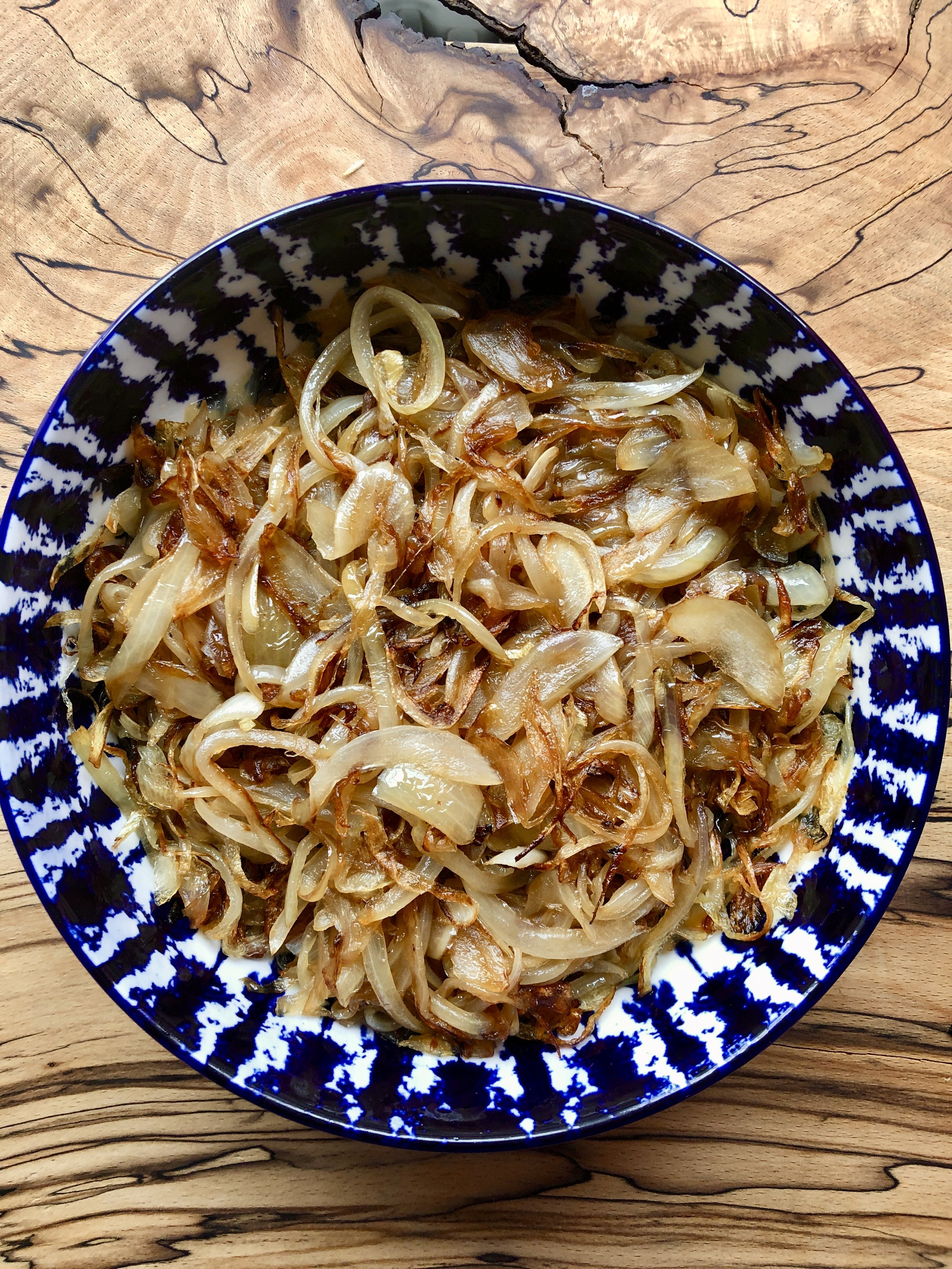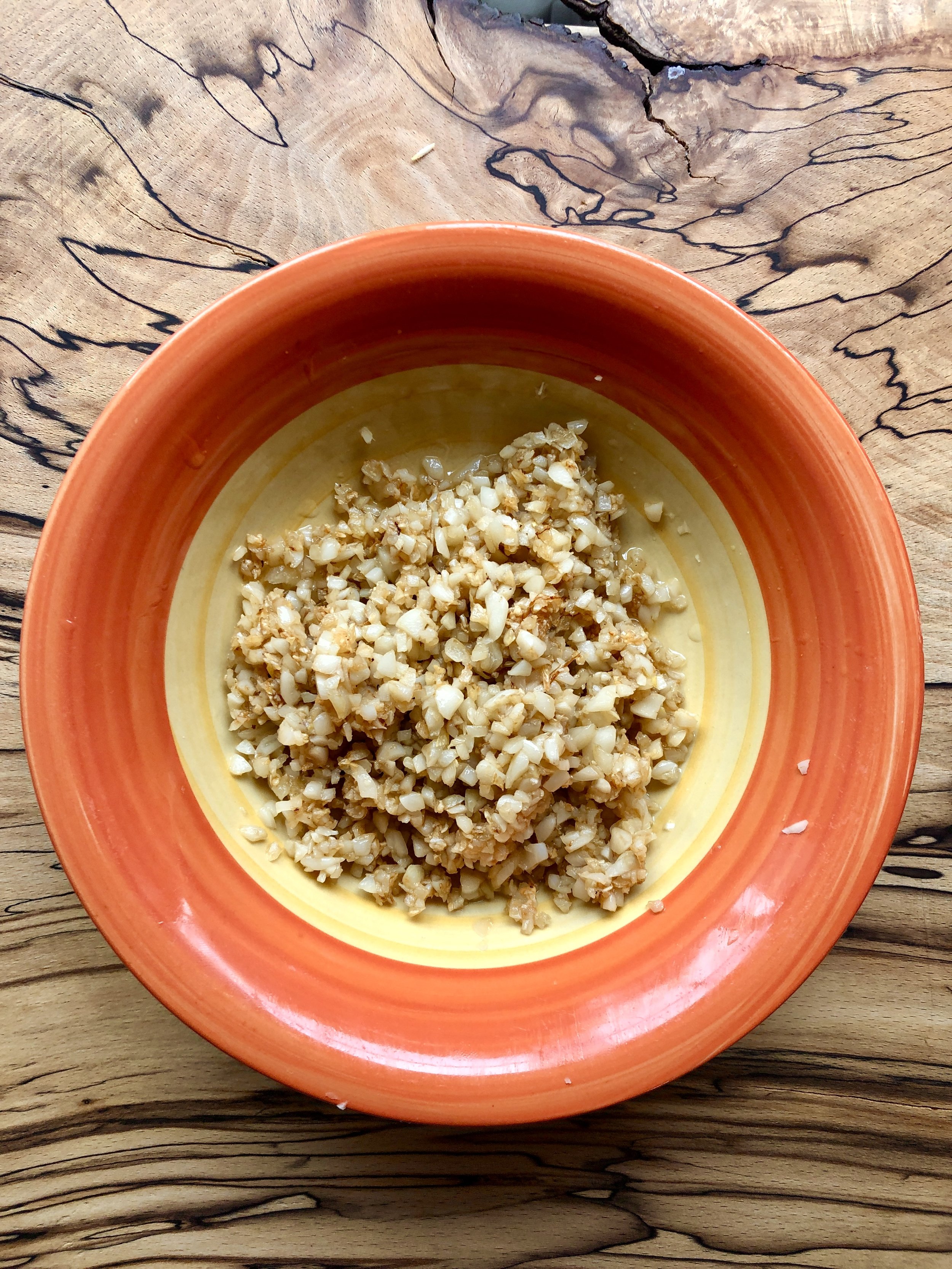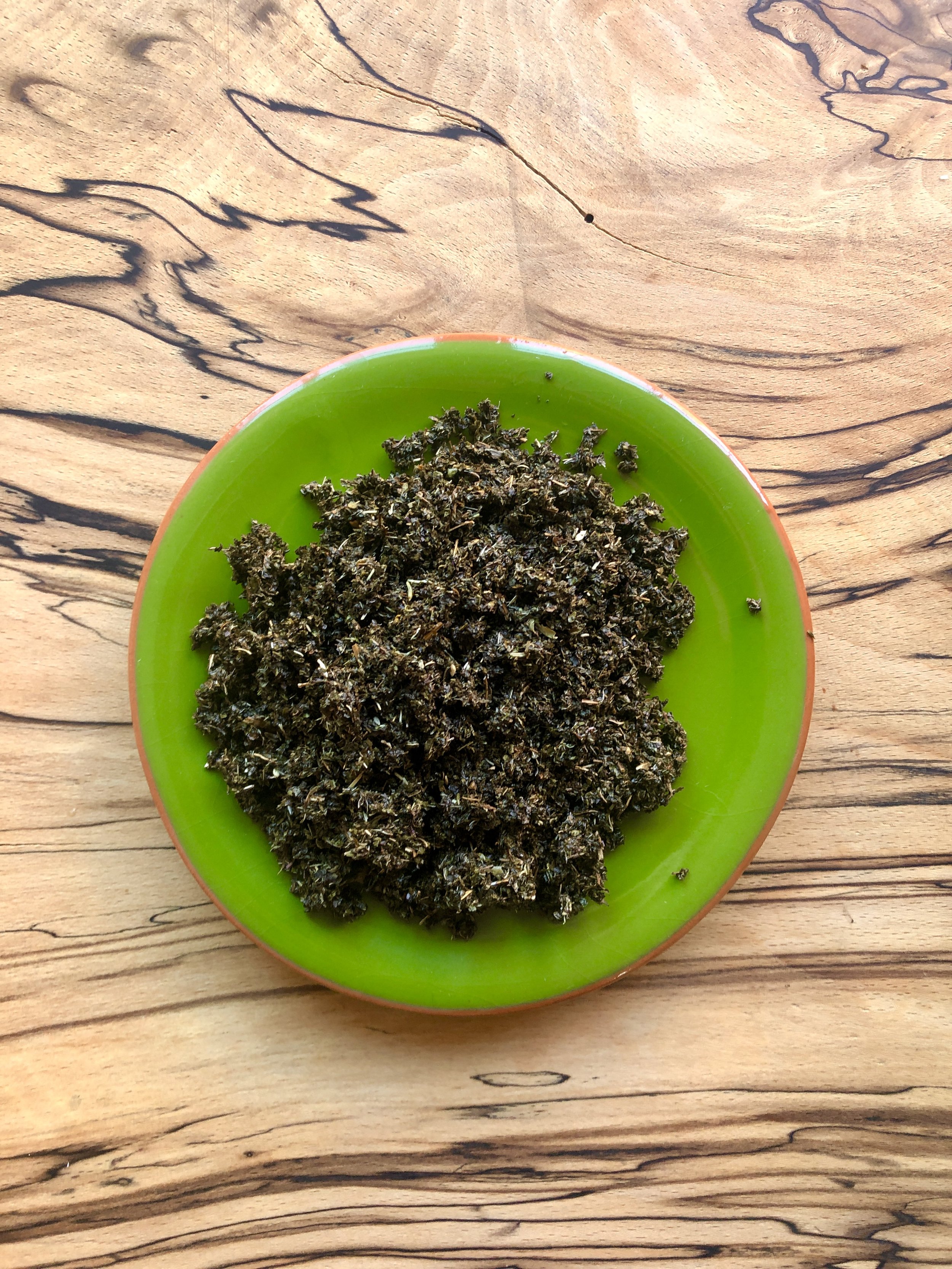Ash-e Reshteh - Persian Noodle, Herb and Bean Pottage
Autumn has long arrived and this means aash time is here! There is nothing that can fill your heart, soul, and tummy on a cold, rainy day like Aash-e Reshteh. The closest English word to aash I can think of is ‘pottage’ (a thick soup of vegetables and often meat). Aash however has an additional criteria: It always involves fresh herbs.
Aash-e Reshteh doesn’t have meat in it. The only meat I use in this recipe is a piece of beef bone marrow to give it extra flavour, but this is completely optional. So you can easily make this recipe vegetarian and even vegan by not serving it with kashk (dehydrated yogurt), but with vinegar instead.
There are many types of aash. Aash-e Reshteh is probably the most popular one. It is flavoured and packed with herbs, spinach, beans, lentils, onions, and other goodies. Reshteh refers to the noodles that are used for Ash-e Reshteh. You can find them in Middle Eastern shops or online. Make sure to buy the ones for aash, not for polo.
I’m sure every Iranian has a special memory of Aashe Reshteh. In me, it evokes memories of family trips to northern Iran. On Kandovan Road (the route from Tehran to the north) just in front of the long tunnel, are many small restaurants serving Aash-e Reshteh. The weather there, between the mountains is usually significantly colder than in Tehran or the seaside, making it the perfect place to serve hot aash.
Among many others, we would stop there and fuel our bodies and souls with a hot bowl of life-giving Aash-e Reshteh. On one occasion we were enjoying our aash, when we heard a reoccurring sound like ‘plong’... ‘plong’…’plong’. When we turned our heads to find out where this sound was coming from, we saw an elderly woman eating Ashe Reshteh and spitting out the chickpeas one by one. How she managed to distinguish the difference between chickpeas and beans in her mouth is a mystery to me.
You can replace and substitute any of the beans, chickpeas and lentils in this recipe to your liking or depending on what you have available. You can significantly reduce the cooking time by using canned beans and chickpeas. They obviously don’t need soaking and also need much less time to cook, since they can be eaten as they are. The lentils still need soaking, but 2 hours will be enough.
Aashe Reshteh is a dish that is traditionally enjoyed together when families and friends gather. That is why I wrote this recipe for 8 to 10 portions. Another reason is, that it freezes nicely. You can easily freeze and store it for up to 3 months. This way you leverage all the effort you put into it and will be able to enjoy it another time, after a long autumn walk for example.
Cook the most popular Persian dishes at home with the help of my e-book.
Time
Prep: 1h
Soaking (only for dried legumes): 2 to 12h
Cook: 2h 15min (cooking time can be reduced by canned beans)
Total: 2h 15min (You can prep during cooking time)
Ingredients (serving 8 to 10)
400g/14oz spinach
150g/5.3oz fresh parsley (after removing the large stalks)
150g/5.3oz fresh coriander (cilantro)
50g/1.8oz chives
50g/1.8oz beetroot leaves (optional)
8 tbsp dried mint
1/2 cup/100g canned chickpeas (OR 3tbsp/35g dry chickpeas)
1/2 cup/100g canned pinto beans (OR 3tbsp/35g dry pinto beans)
1/2 cup/100g canned navy beans (OR 3tbsp/35g dry navy beans)
1/2 cup/100g canned red kidney beans (OR 3tbsp/35g dry red kidney beans)
1/2 cup/100g brown lentils (dry)
(Beans can be substituted for one another if you can’t find all of the different types listed above)
1 piece of beef bone with marrow (optional)
200g/7oz Reshteh (Persian aash noodles which you can find at Middle Eastern supermarkets or online)
6 tbsp vegetable oil
6 onions
2 bulbs of garlic
3 tsp turmeric
1 tsp black pepper
Salt to taste
Water
1/4 tsp saffron and 2 ice cubes (optional)
2 tbsp Kashk for serving (drained yoghurt commonly used in Persian cuisine, also available at Middle Eastern shops or online) OR vinegar to serve (optional)
Method for preparing Ash-e Reshteh
Let the dry beans soak overnight and the dry lentils for 2 hours
As I mentioned above, if you can’t find all of the beans listed, you can just use more of those that you do have or substitute them with a similar kind of bean.
Let any dried beans you use soak for at least 12 hours before starting to cook. Change the soaking water twice during this time. If the only dry ingredient you use is the lentils, you can start letting them soak in water 2 hours before you start cooking.
Bloom the saffron (optional)
If you are using saffron threads, grind them using a pestle and mortar. Sprinkle the ground saffron over the ice cubes in a glass and set them aside to melt.
Cook the dry beans (with the bone marrow)
If you aren’t using bone marrow or dry beans just skip this step and jump to the next step “Prep the herbs and veg”.
If you are using beef bone marrow, transfer the bone to a large pot. If you are using dry, soaked beans as well, drain and rinse them and add them to the pot (without the lentils).
If your beans are all canned, just cook the bone alone. It will give your aash lots of flavour. Add approx. 1.7l / 7 US cups freshly boiled water and turn the stove on medium heat.
If you want your aash to be vegetarian, only transfer the dry, soaked and drained beans (not the lentils) to the pot and add approx. 1.7 litres / 7 US cups freshly boiled water. Turn the stove on to medium heat.
Season with turmeric, black pepper and salt. If you plan on serving the aash with kashk, be careful not to over-salt at this point, as kashk is very salty on its own. You can always salt more later. Let the bone and beans simmer with the lid on for 45 min.
Prep the herbs and veg
In the meantime wash the spinach and herbs.
Peel the onions and garlic. Finely slice the onions. Finely chop the garlic (I know it’s a lot of garlic but finely chopped is just the ideal texture for Aash-e Reshteh).
Place a large frying pan over medium heat and add 3 tbsp of vegetable oil to it. Gently caramelise the sliced onions for about 10 to 15 minutes until they are golden brown. With this amount of onions, you will likely have to sauté them in several batches. This will ensure that they caramelise nicely. After each batch, you can add a bit more vegetable oil, if needed. Transfer the caramelised onions to a bowl and set them aside.
Add 2 tbsp more oil to the pan and gently caramelise the garlic over low temperature for about 5 minutes. Transfer it to a separate bowl and set it aside for later.
Now heat the remaining oil in the pan and briefly sauté the dried mint for around 30 seconds. You need to be quick so that it doesn’t burn. It’s best to have a small bowl nearby to which you can transfer the mint swiftly to remove it from the heat of the pan. Set it aside for later.
Chop the spinach, parsley, coriander, chives and beetroot leaves, if you have any. Roughly chopping through them a couple of times is enough. The spinach can be roughly chopped, as the bigger leaves give the ash a nice texture. If you are using baby spinach, there’s no need for chopping.
Once the dry beans and the optional beef bone has been simmering for 45min, remove the bone from the pot and return just the cooked marrow to it. Don’t worry, if you don’t manage to remove the marrow from the bone. The aash will have absorbed much of its flavour anyway. Add the drained and rinsed lentils to the aash and let it simmer for another 30 minutes.
If you use canned beans only and no bone marrow
If you use canned beans only and no bone marrow, start cooking the aash now by transferring the drained and rinsed lentils to a large pot and adding approx. 1.4l / 6 US cups freshly boiled water to them. Turn the stove on medium heat and season with turmeric, black pepper and salt. If you plan on serving the aash with kashk, be careful not to over salt at this point, as kashk is very salty on its own. You can always salt more later. Let the lentils simmer with the lid on for 30 minutes.
Add the herbs and noodles
30 minutes after adding the lentils, you can add the fresh, chopped herbs and spinach to your aash. Also add about 2/3 of the caramelised onions and garlic. Keep the rest as garnish.
Once the herbs and spinach have changed colour to a deep, dark green (approx. after 30 min), you can add in the reshteh. Also, add a teaspoon of saffron water now, if you like.
Allow 15 minutes for the noodles to cook, then check if the aash needs more water. Keep in mind that aash is much thicker than most soups. Also, it thickens further when it’s cooling down once served. Add some hot water to it, if needed.
Serving Aash-e Reshteh
If you and your family really like kashk, you can add about 2 tbsp to the pot and stir it in until it’s dissolved. Then try the aash to decide whether it needs more salt or not. If you have guests and you’re unsure if they tolerate lactose or some of them are vegan, you can serve the kashk separately. Combine about 2 tbsp of kashk with a little water until it has a thick, creamy consistency. This way whoever likes it can add it to their plate.
If you’re sure that everyone eats kashk, you can combine 2 more tbsp with the remaining saffron water and use both, the white and the yellow saffron-kashk as garnish. This adds another colour and flavour to the dish. Those who don’t eat kashk might want to add a splash of vinegar to their aash. My Maman actually prefers it this way.
Transfer the Aash-e Reshteh to a serving bowl and garnish with regular and saffron-kashk, as well as the remaining caramelised onions and garlic and the sautéed mint. Enjoy!
I’d love to see your Ash-e Reshteh! Feel free to tag me with @igotitfrommymaman on Facebook or Insta so I can take a look and give you a thumbs up!
Want to save this recipe for later? You can pin it to your recipe board.
Looking for more Persian recipes? Here are more of my free written recipes!
Sign up to Maman’s recipe mail for notifications of new recipes on the blog and special offers on my courses.
Thanks for stopping by! Let’s stay in touch via Instagram, Facebook or Pinterest.




